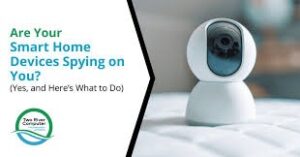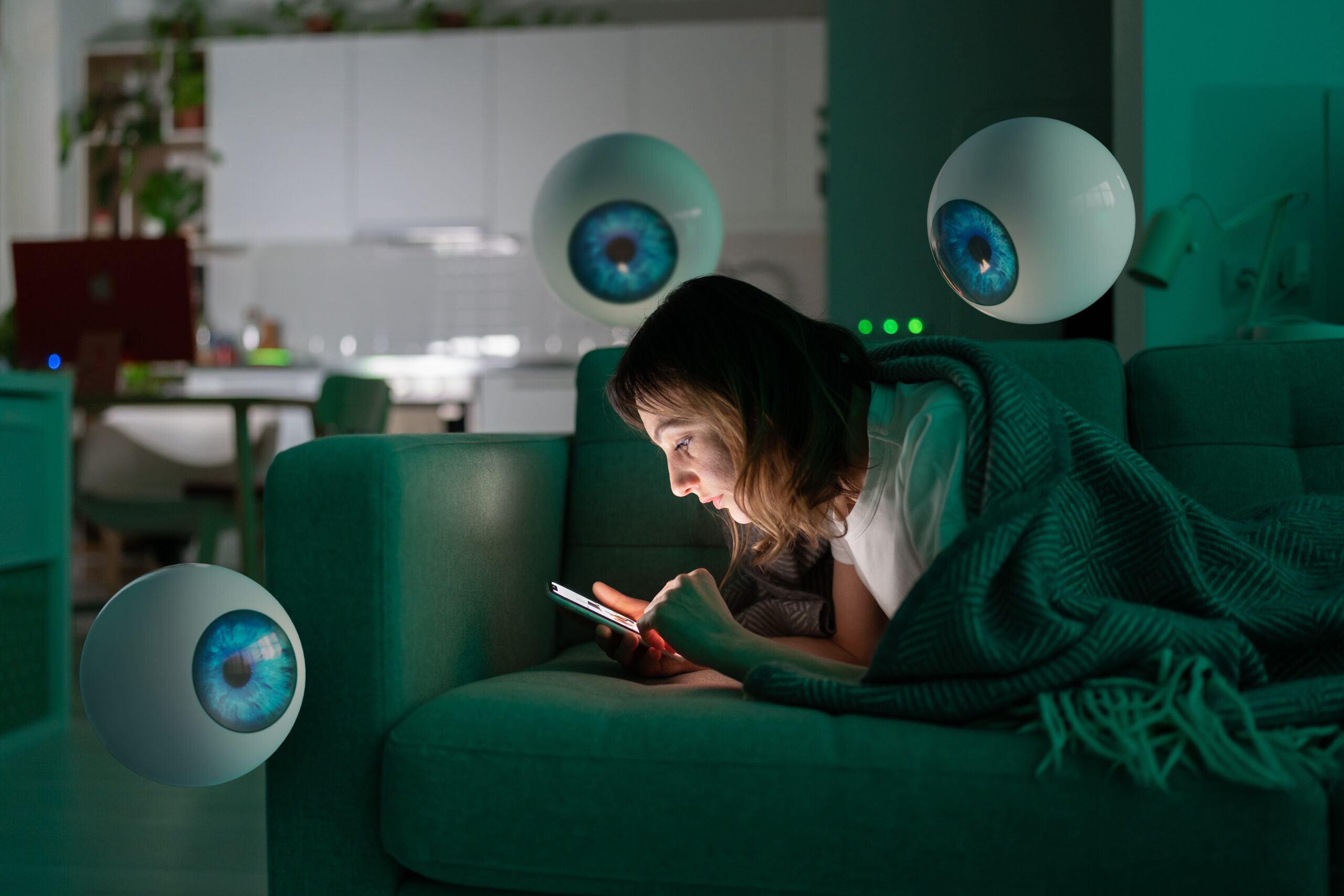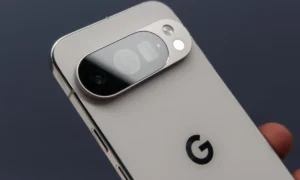Your Smart Home Is Spying on You: 2025

INTRODUCTION
A smart coffee maker can prepare your selected drink at the time you set before your alarm goes off. Your Smart Home Is Spying delivers news headlines through its voice features as your thermostat sets the temperature and dim lighting switches automatically, while you can effortlessly enjoy this automation. Our smart homes provide a harmonious automated solution that delivers ease to our daily lives. Handling everyday activities using automated devices normally appears effortless, yet concealed security risks exist.
The Internet of Things (IoT) has surged exponentially in 2025 since more than 75 billion devices became connected across the globe. Your Smart Home Is Spying on new vulnerabilities against hackers and data brokers, and nation-state spies when they become technologically sophisticated. The security vulnerabilities that exist in today’s smart devices make hacking attempts more perilous than ever. This article reveals the primary security threats that IoT will face in 2025 while providing all necessary explanations and protection strategies for readers.
1. The Rise of the “Smart Home Spy”
Hackers Can Watch and Listen Through Your Devices
Many smart home gadgets-like security cameras, voice assistants, and smart TVs, have built-in microphones and cameras. While manufacturers claim these are secure, real-world breaches prove otherwise:
- Case Study (2024): A family in Ohio discovered their baby monitor was hacked, with a stranger talking to their child through the speaker. The culprit? A default password that they never changed.
- Research Finding: A Princeton University study found that 72% of smart home devices send unencrypted data to third-party servers, making them easy interception targets.
AI-Powered Eavesdropping
By 2025, voice assistants like Alexa and Google Home will have become frighteningly accurate at predicting behavior, but also at leaking private conversations. Some devices now record background chatter even when not activated, with AI analyzing speech patterns for targeted ads (or worse). Your Smart Home Is Spying.
How to Protect Yourself:
- Disable always-on microphones when possible.
- Use a separate network for IoT devices (more on this later).
- Regularly check device permissions—some apps request unnecessary mic/camera access.
2. IoT Devices Are Being Weaponized

- When hackers operate they make devices using IoT technology into dangerous digital instruments. Smart devices including fridges along with thermostats and light bulbs become part of botnets because they have poor security mechanisms that hackers can exploit.
- Attackers use DDoS methods to overwhelm websites, causing Twitter Netflix and Reddit along with other services to become inaccessible during the 2016 Mirai botnet campaign.
- Unclicked smart TVs might send spam emails, which you are unaware are being sent from your device.
- Cyber attackers can steal the cryptocurrency mining process from your devices by using your processing power to secretly work for them at the expense of degraded system performance.
What Is the Reason Behind Their Prone Nature?
- The combination of admin/password functions as the default login for IoT devices when they reach users but the majority of consumers fail to update this basic credentials.
- Smart devices lack necessary security updates because the manufacturers rarely release updates through which they could fix known vulnerabilities.
- The lack of encryption on certain devices leads to data transmissions with no encryption protocols, which enables hackers to access the transmitted commands.
How to Protect Yourself:
- Always change default passwords (use a password manager).
- Buy from reputable brands that offer regular firmware updates.
- Disable remote access if you don’t need it.
3. Data Brokers Know More About You Than Your Family Does
Your Smart Home Is a Goldmine for Surveillance Capitalism
Every time you ask your voice assistant for the weather, adjust your thermostat, or unlock your smart door, data is collected and sold. Companies like Google, Amazon, and lesser-known data brokers compile profiles that include:
- Your daily routine (when you wake up, leave for work, go to bed).
- Shopping habits (smart fridges track food purchases).
- Even health data (smart scales, sleep trackers).
A 2025 MIT study found that 89% of smart home devices share data with at least three third-party companies, often without clear disclosure.
How This Data Can Be Used Against You
- Insurance companies could raise rates if your fitness tracker shows inactivity.
- Advertisers serve hyper-targeted (and manipulative) ads based on your habits.
- Stalkers or thieves could exploit smart lock or camera vulnerabilities to monitor your movements.
How to Protect Yourself:
- Review privacy settings on all IoT apps.
- Use local-only devices (e.g., a smart hub that doesn’t rely on the cloud).
- Consider open-source alternatives (like Home Assistant) for better control.
4. The Scariest Threat Yet: AI-Powered Social Engineering
Hackers Can Now Impersonate Your Voice or Face

With AI deepfake technology, criminals can:
- Clone your voice from a few seconds of audio (e.g., from a compromised smart speaker).
- Generate fake video calls pretending to be a family member in distress.
- Bypass voice authentication on banking apps or smart locks.
A 2024 FBI warning reported a 300% increase in AI-assisted scams, including one where a hacker mimicked a CEO’s voice to authorize a fraudulent $240,000 wire transfer.
Why Smart Homes Make This Worse
- More devices = more attack surfaces.
- People trust voice commands without verification.
- AI can analyze your habits to craft personalized scams (e.g., “Hey Mom, I’m locked out—can you disable the alarm?”).
How to Protect Yourself:
- Enable multi-factor authentication (MFA) wherever possible.
- Set a verbal safe word for sensitive smart home commands.
- Be skeptical of unexpected voice/video requests- verify via another channel.
The Pros: Why People Love Smart Homes
1. Unmatched Convenience
- Automatic scheduling through automation allows lights and thermostats, and appliances to perform based on your regular activities.
- The voice control system enables users to manage cooking operations and entertain themselves, and maintain security without taking their hands off devices.
- Remote Access: Lock doors, check cameras, or preheat the oven from anywhere.
2. Energy & Cost Savings
- Smart thermostats manufactured by Nest achieve energy cost reductions by 10-15% when they optimize heating and cooling functions.
- The automatic lights controlled by AI systems detect inactive lighting and then remove it from the electric grid.
3. Enhanced Security (When Done Right)
- Smart locks give users two security benefits: they replace physical keys with digital keys that cannot be lost and provide secure digital access permission for visitors.
- Camera systems such as Ring cameras, alongside smoke detector,s notify users instantly about break-ins and fire emergencies and water leakage incidents Your Smart Home Is Spying
4. Health & Accessibility Benefits
- Through voice commands and mobile applications, elderly and disabled users achieve increased independence by controlling their homes.
- The device monitors contaminants in the air to control ventilation systems.
The Cons: The Hidden Dangers of IoT
1. Privacy Invasion
- Always-listening mics and always-watching cameras can be hacked or abused.
- Data sold to advertisers—your routines, purchases, and even conversations are monetized.
2. Cybersecurity Vulnerabilities
- Weak default passwords make devices easy targets (e.g., hacked baby monitors).
- Botnet recruitment: Your smart fridge could help crash websites in a DDoS attack.
- No software updates: Many cheap IoT devices become insecure within months.
3. Over-Reliance on Tech = Single Point of Failure
- Internet outage? Smart locks, lights, and thermostats may become unusable.
- Voice assistant glitches could misinterpret commands (e.g., accidental purchases).
4. AI-Powered Exploits (The Newest Threat)
- Deepfake voice scams trick you into unlocking doors or transferring money.
- Predictive manipulation: Ads (or scams) tailored to your habits and moods
CONCLUSION
People have experienced rapid transformation in modern life through the smart home revolution, which provides unprecedented convenience with energy conservation and raises safety standards. Our enthusiastic adoption of smart household devices requires consideration of the severe privacy reductions and security risks alongside dangerous misuses. The security situation for 2025 reaches an all-time high due to superior technology from hackers and insatiable data brokering operations, which create confusion through AI-powered surveillance methods. Sound decision-making involves purchasing safe and dependable devices and making smart configurations, and maintaining regular inspections of software updates and permissions. Smart homes are not dangerous by nature but require active measures to address their security risks. The responsible management of IoT technologies should be the future direction, so people can benefit from technological advantages without enduring technological risks. Our selection goes beyond technology tools because it determines the approach we will adopt toward digital existence.










